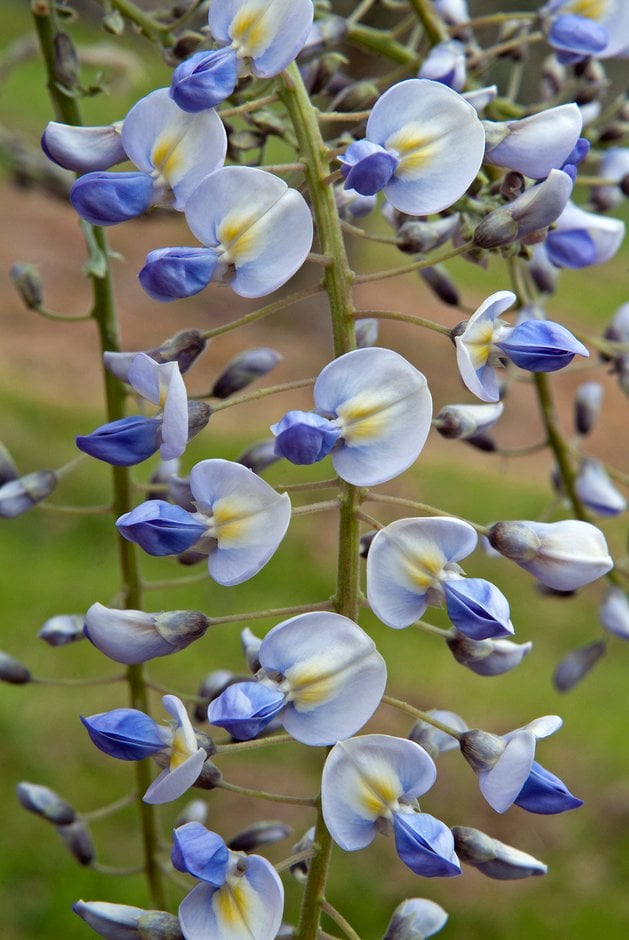Wisteria floribunda 'Kokuryū'
Japanese wisteria 'Kokuryū'
A climbing perennial with pinnate green foliage. Fragrant, violet-purple flowers are produced in hanging racemes up to 50cm long, in early summer
Other common names
Japanese wisteria 'Royal Purple'Japanese wisteria 'Russelliana'
Synonyms
Wisteria floribunda 'Royal Purple'Wisteria floribunda 'Violacea'
see moreWisteria floribunda 'Russelliana'
Wisteria sinensis 'Black Dragon'
Wisteria × formosa 'Black Dragon'
Wisteria × formosa 'Kokuryū'
Wisteria russelliana
Wisteria × formosa Black Dragon
Wisteria floribunda Black Dragon
Size
Ultimate height
8–12 metresTime to ultimate height
10–20 yearsUltimate spread
Wider than 8 metresGrowing conditions
Moisture
Moist but well–drainedpH
Acid, Alkaline, NeutralColour & scent
| Stem | Flower | Foliage | Fruit | |
| Spring | Green | |||
|---|---|---|---|---|
| Summer | Purple Blue | Green | Green | |
| Autumn | Green | Green | ||
| Winter | Grey Silver |
Position
- Full sun
- Partial shade
Aspect
West–facing or South–facing
Exposure
Sheltered Hardiness
H6Botanical details
- Family
- Fabaceae
- Native to GB / Ireland
- No
- Foliage
- Deciduous
- Habit
- Climbing
- Potentially harmful
- Harmful if eaten. Wear gloves and other protective equipment when handling. Pets: Harmful if eaten - for further information and contact numbers regarding pets, see the HTA guide to potentially harmful plants
- Genus
Wisteria are vigorous woody climbers with twining stems bearing pinnate leaves and long pendulous racemes of fragrant pea-like flowers in spring and early summer
- Name status
Accepted
How to grow
Cultivation
Grow in a fertile, moist, well-drained soil in sun or semi shade. May be trained into a large tree, on a wall, arch or pergola, or as a free-standing half standard. See wisteria cultivation for more advice
Propagation
Propagate by layering, softwood cuttings, hardwood cuttings or grafting
Suggested planting locations and garden types
- Cottage and informal garden
- City and courtyard gardens
- Climber and wall shrubs
- Wall side borders
Pruning
Prune twice a year for best results, see pruning wisteria for detailed advice
Pests
May be susceptible to aphids, glasshouse red spider mite, and scale insects including wisteria scale
Diseases
May be susceptible to honey fungus (rarely), phytophthora root rot, coral spot, fungal leaf spot, virus diseases, and powdery mildews
Love gardening
Sign up to receive regular gardening tips, inspiration, offers and more
View our Privacy Policy
Get involved
The Royal Horticultural Society is the UK’s leading gardening charity. We aim to enrich everyone’s life through plants, and make the UK a greener and more beautiful place.

